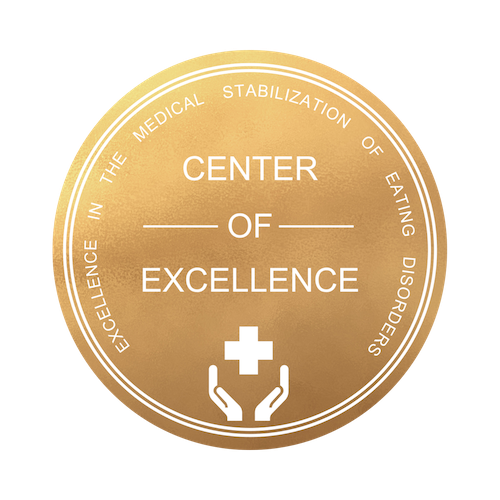
What is Atypical Anorexia Nervosa (A-AN)?
A myth in eating disorders is that restrictive eating disorders including anorexia nervosa and ARFID are only are problematic at very low BMIs and % Ideal Body Weight (IBW). The reality is that disordered eating and resulting medical complications can occur with previously overweight patients who present with major absolute weight loss over a short time. This is called Atypical Anorexia Nervosa (A-AN), also known as "weight suppression."
The amount of absolute weight loss from the highest weight (weight suppression) and the rate of weight loss that lead to medical complications requiring inpatient medical stabilization are still poorly defined and being actively researched. The current literature does suggest that adolescents with A-AN are at risk for more cardiovascular complications. Bone disease and amenorrhea also seem to be complications. Each case is evaluated carefully, including percentage of body weight loss, magnitude, and rate of weight loss (time frame), in the context of current body weight.
Atypical Anorexia Nervosa Symptoms & Signs
All criteria for AN are met, except that despite significant weight loss, the individual’s presentation weight is within or above the normal range.
- Current BMI, % IBW normal or above normal
- Recent rapid, massive weight loss
- < 3-6 months for duration of weight
- Losing > 25% of premorbid weight
- Drive for thinness, body image distortions
Atypical Anorexia Nervosa Medical Complications
-
Cardiac Problems
Sinus bradycardia, hypotension
-
Low White Blood Cell, Red Blood Cell, Platelet Counts
Anemia
-
Endocrine Abnormalities
Amenorrhea
-
Loss of Muscle and Bone
Sarcopenia, bone loss (osteopenia and osteoporosis)
Atypical Anorexia Nervosa Facts
- Atypical Anorexia Nervosa is now officially classified under the category of “other specified eating disorders,” in the DSM-5.
- Despite official clinical recognition, atypical anorexia nervosa is under-recognized and widely perceived to be less severe than anorexia nervosa.
- Patients with atypical anorexia nervosa can have just as severe or more severe medical complications as classic anorexia nervosa, with slight differences.
- The diagnosis of atypical anorexia nervosa requires the same criteria as for anorexia nervosa, except that despite significant weight loss, the individual’s weight is within or above the normal range.
- The prevalence of atypical anorexia nervosa by age 20 years is 28% (vs < 1% for anorexia nervosa).
- Patients with atypical anorexia nervosa are less likely to receive inpatient treatment.
- Patients with atypical anorexia nervosa experience the same incidence of binge eating, purging, psychiatric comorbidity, use of psychotropic medications, self- harm, suicidal ideation, severe depressive symptoms, and obsessive/ compulsiveness as classic anorexia nervosa.

